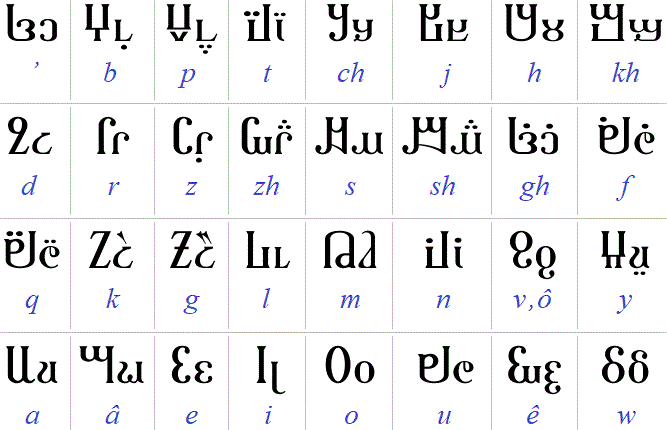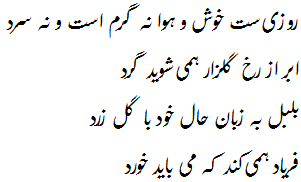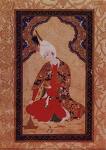This is an update of the script and font for the Persian language called Bostani, its first major revision in ten years. There has been renewed interest lately, so I decided to make some improvements where possible. It is named after the famous poem Bustân by Sa’di.
Introduction
Some modern Persians have expressed that their language deserves a more efficient and representative script than that used currently. The Arabic script was adopted, modified and used from about 800 AD, and most of the literary wealth of Persia exists in this Perso-arabic form. But there are a number of shortcomings to this otherwise attractive script:
- vowels are either unwritten or ambiguous
- many consonants have multiple (redundant) forms
- it is often difficult or inefficient for modern communication systems
- the cultural link to Arabia is felt only in certain religious contexts
Bostani sought to be a new solution to some of the problems mentioned above, in particular:
- representing the language’s phonology clearly
- using a near-universal input and printing method
- having an attractive, distinctive neo-Persian form
The letters
The consonants are in many cases developed from mirrored forms of Perso-arabic and Avestan glyphs. In order to unify the set, serifs and strokes often used in the Latin script have been incorporated. For the consonants, dotting is often used to preserve the relations existing in Perso-arabic, and in particular it was thought the triple-dotting (leopard-spotting) was a distinctively Persian effect worth keeping. The /k/ and /g/ are made to be relations of /d/, and their strokes are intended to echo Old Persian cuneiform. Note too that /l/ is made a partner of /b/ and /p/. A separate /q/ is available for Dari and other dialects.

The vowels are a major enhancement, including Avestan-like shapes for /a/ and /a:/, and /e/ and /o/ from Greek. In the list below, the multiple transcriptions for a vowel are in suggested chronological order. Long /e:/ and /o:/ are from Middle Persian and are still used in some variants of modern Persian.
The extra letters include a single glyph for syllabic final /ng/, a ligature for the common verb /ast/, a ligature for the common suffix /esh/, and /w/ for variants where the /v/ might be used for /o:/. Punctuation is inspired by Avestan.

Upper case letters are in many cases similar to their lower case form, others are derived from more ancient forms such as Avestan. Here and below using a common transliteration instead of the IPA.

Sample text
This is a rubâ’iyât by the famous poet Omar Khayyâm. Persian source is ganjoor.net and the nasta’liq font is by Urdu Typesetting. (* Some sources have pahlavi instead of hâl-e khod.)
79. Ruzist khosh va havâ na garmast va na sard
abr az rokh-e golzâr hami shuyad gard
bolbol be zabân-e hâl-e khod* bâ gol-e zard
faryâd konad ke mei bâyad khord.



